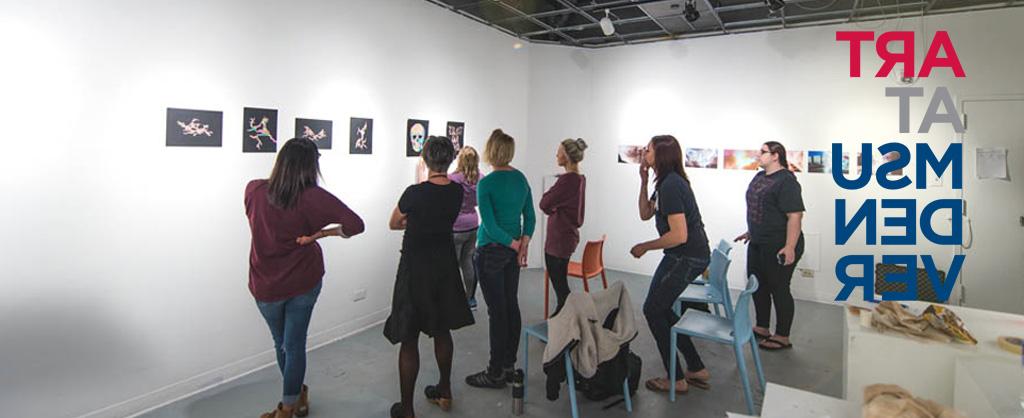The Bachelor of Fine Arts in Art prepares students to be critical, creative thinkers and makers. Students often become practicing artists who exhibit their work in galleries both near and abroad and might continue their research in graduate studies. Whatever your final career choice, the skills of the B.F.A. are appropriate for careers throughout the creative economy.
The Bachelor of Fine Arts in Art is interdisciplinary. Students select an emphasis of 9 credits in ceramics, drawing, jewelry, painting, photography, printmaking, or sculpture, and 6 credits a complementary area. If the emphasis is in a two-dimensional area, the complementary area would be one of the three-dimensional areas; if the emphasis is in a three-dimensional area, the complementary area would be one of the two-dimensional areas. Students also take at least 15 credits in interdisciplinary integrated media coursework.
Consistent with the Department of Art, student learning outcomes are designed around three assessable themes: research, execution, and articulation.
In the BFA in Art, instruction should prepare students to:
- make artworks that show evidence of intellectual inquiry and curiosity;
- convey ideas that are consistently reinforced through the execution of cohesive work(s) that are the result of the process of making;
- use effective and eloquent oral, written, and visual communication of enduring ideas.
Areas
Digital and Emerging Art Practices
Drawing
Jewelry Design and Metalsmithing
Painting
Photography
Printmaking
Sculpture

Portfolio Requirements and Admission
All students entering the Department of Art as majors are admitted under either the B.A. in Art or the B.A. in Art History, Theory, and Criticism. After completing the foundation courses and one other course in ART, CDES, or ARTH, those wishing to pursue the B.F.A. in Art, B.F.A. in Art Education, or the B.F.A. in Communication Design will be required to pass a formal portfolio review for admittance.


